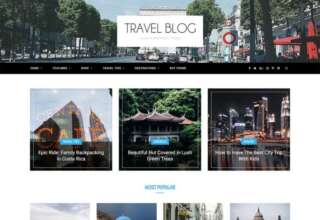/travel-mobile-first.jpg?origwidth=800&origheight=400&origmode=crop&Anchor=MiddleCenter&width=600&height=300&scale=both&mode=crop)
It’s popular to talk about the impact that smartphones have had and with good reason. In recent years, since smartphone introduction, there has been a dramatic shift in the way people engage with brands online.
Today, the majority of people interact with brands on a mobile device, not on a computer. But many travel companies haven’t caught up yet with this trend.
In the US, Sojern data shows that 26% of travel searches in the fourth quarter of last year occurred on a mobile device.
In other parts of the world, it’s even higher: Travel searches conducted on a mobile device totaled 47% in Europe; 40% in Asia; 38% in the Middle East and Africa; and 34% in Latin America.
Even if you’re only focused on the US, nearly a quarter of search activity is happening on a mobile device, and that portion is growing rapidly.
And while search behavior is important, bookings are what really matter. According to research from eMarketer, travel bookings derived from mobile devices in the US is projected to reach $86.2 billion this year. Wow.
The bottom line is this: Now is the time to go mobile-first.
Going mobile-first means an always-on approach
Travel marketers have traditionally focused their marketing activity during the peak season with light coverage during slow periods. In a mobile-first world, this approach just doesn’t work anymore.
Why? Because we now know that travelers don’t actually think about travel in this way.
Last year Sojern analyzed more than eight billion travel intent signals, and we found that there is no average path to purchase.
In our research, we see that travel booking behavior varies substantially – not just from person to person, but even from trip to trip. A person that books last-minute business travel from their iPhone, for example, may actually be a careful planner using multiple devices when booking a family vacation.
What this means for your organization is that with digital technology, marketing is not something you turn off and on. It works best when you educate and convert travelers at every stage of their path to purchase – or as we like to say, from dream to destination.
Responding in real time while travelers research booking options has a bigger impact because you’re actively engaging with them all the way through the funnel.
And remember, people now have some kind of device in front of them at all times. In today’s competitive world you need to maintain the customer relationship through ongoing communication, not just at certain times of the year.
Mobile devices change booking behavior
Mobile technology also is having an impact on travel booking behavior.
For US travelers, 72% of all mobile bookings made happen within a 48-hour window prior to the booking. Travelers want more flexibility, which mobile devices have delivered leading to a greater propensity to book last-minute.
Travel is quickly becoming an impulse buy. Mobile apps like HotelTonight easily allow same-day bookings for hotel rooms. For last-minute flights, there are apps like Flight Out and OneTravel’s “Fly Now.”
As the popularity of these new apps grow, more consumers will embrace last-minute bookings, creating new opportunities for marketers.
How to become mobile-first
Hire a senior, cross-functional leader to transform your mobile strategy. To truly go mobile-first requires different parts of the organization to work together.
For example, if your marketing team implements a mobile advertising strategy, they will need to be able to drive to a booking experience the spans native apps, the mobile web and the desktop.
The mobile landscape is complex. It requires significant resources, and you need an effective cross-functional strategy to reach your customers wherever they are in their path to purchase.
Optimize the customer experience across all touch points. From the front-desk experience to the mobile app, make sure your customer experience is seamless.
Our data shows customers use mobile web to search for travel, but book through native applications or on a desktop. However your customers find you – offline or online, computer, tablet or smartphone – the brand experience needs to be high-quality and consistent.
Understand there is no “average” traveler. The simple fact is that people research travel destinations across multiple sites and devices before making a decision. Sometimes they will research months in advance, and other times that same person will book a same-day trip.
User behavior varies significantly from trip to trip, and the differences are so striking that at Sojern we believe marketing to an “average” traveler will cause you to miss a large segment of your potential customers entirely.
The future is bright for the travel industry. Don’t shy away from new technologies, embrace them!
It’s now possible to get your brand’s message in front of exactly who you’re trying to reach at precisely the right time to influence their buying behavior. That’s only possible given the 2.5 billion global smartphone users, so mobile presence should be maximized.
If you’re not prioritizing mobile as a part of your overall marketing strategy, you’re missing out. Now is the time to make it happen.
[“Source-phocuswire”]















